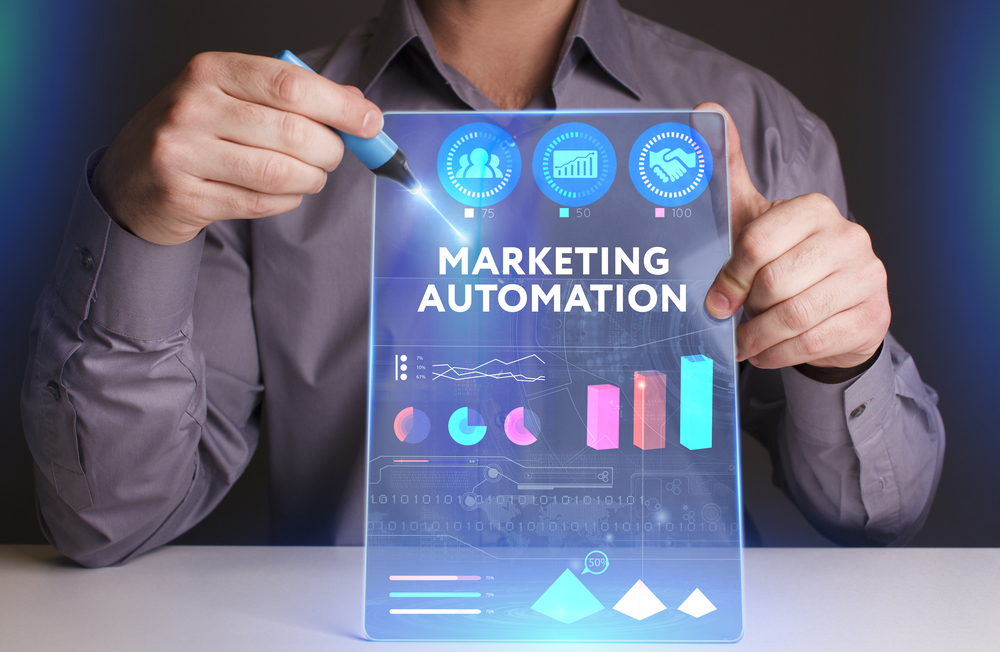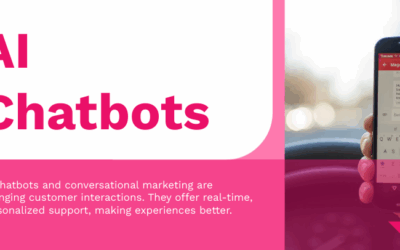Marketing automation is the technology that manages marketing processes and campaigns across multiple channels, automatically. In its essence, it enables companies to efficiently target audiences with automated messages across email, web, social media, and other channels, utilizing tools designed to personalize and optimize these communications based on user behavior. For high-level decision-makers, understanding marketing automation is crucial because it enhances customer acquisition, retention, and the overall marketing ROI, making it an indispensable asset in any modern marketing strategy.
Benefits of Marketing Automation
1. Improved Efficiency and Productivity
Marketing automation helps streamline repetitive marketing tasks, such as sending out email campaigns, managing social media posts, and updating customer records. This allows teams to focus on higher-level strategies and creative activities rather than getting bogged down by manual tasks. With efficient workflows, businesses can handle more projects, respond to customer interactions faster, and scale their campaigns effectively.
2. Enhanced Customer Targeting and Personalization
Automated marketing tools leverage customer data to personalize messages, making it easier to segment your audience based on behaviors, demographics, and purchasing patterns. This high level of customization has been shown to increase engagement and conversions as customers receive content tailored to their specific needs and interests.
For example, advanced B2B lead generation techniques utilize marketing automation to identify high-potential leads in the SaaS market, providing a personalized outreach strategy that resonates more effectively with target audiences.
3. Data-Driven Insights for Better Decision Making
Marketing automation platforms offer robust analytics that help businesses understand the impact of their campaigns. From click-through rates to customer retention, the detailed insights allow leaders to adjust strategies based on real-time data and refine their approach to better meet business objectives. Automated reports provide information on the performance of various channels, so decision-makers can allocate resources effectively and drive marketing efficiency.
4. Improved Lead Nurturing and Scoring
Marketing automation is key to successful lead nurturing and scoring. Automated workflows allow businesses to engage potential customers over time with relevant content based on where they are in the sales funnel. This automated nurturing, combined with lead scoring, helps sales teams prioritize leads more effectively, leading to higher conversion rates.
For instance, utilizing lead scoring in conjunction with marketing automation helps focus on high-quality leads, maximizing resource allocation and increasing sales productivity. Companies that need to integrate such lead nurturing strategies should consider their best practices in CRM integrations to ensure a seamless data flow between departments.
Key Features of Marketing Automation Platforms
Marketing automation platforms come with a wide range of tools and features, each designed to meet specific marketing needs. Decision-makers should prioritize the features that best align with their organizational goals.
Email Marketing Automation
Email marketing automation remains one of the most widely used functions, enabling businesses to send personalized emails to large segments of their audience with minimal effort. Features include automated drip campaigns, behavior-triggered emails, and dynamic content based on user engagement. Leveraging personalized content within email marketing drives engagement and nurtures relationships with potential clients at every stage of the buyer’s journey.
CRM Integration
Integrating marketing automation with Customer Relationship Management (CRM) software is essential for managing customer interactions across all touchpoints. CRM integration allows marketing and sales teams to access unified customer data, making it easier to track the sales cycle, prioritize leads, and improve customer experiences. A strong CRM strategy aligned with automation can also streamline lead management and improve pipeline transparency.
Social Media Automation
Social media automation simplifies content distribution, scheduling, and engagement on social platforms. Many marketing automation platforms allow companies to pre-schedule posts, analyze social media metrics, and even respond to customer comments through a single dashboard. By automating social media tasks, companies maintain a consistent online presence and engage with their audience without the need for constant monitoring.
Analytics and Reporting
Analytics and reporting tools within marketing automation platforms give companies access to in-depth campaign data, showing metrics such as open rates, conversion rates, and customer journey insights. Decision-makers can use this data to make informed decisions about future campaigns, adjust budgets, and optimize strategies for greater impact. Tools like A/B testing help refine messaging and improve overall campaign performance based on real data.
Lead Scoring and Management
Lead scoring enables companies to rank leads based on their engagement and likelihood to convert. This feature is especially useful for sales teams, as it helps prioritize high-potential leads, ultimately improving close rates. Automated lead management tracks lead interactions across channels, ensuring timely and relevant follow-ups.
Implementing Marketing Automation: Best Practices
1. Define Clear Goals and KPIs
Before implementing marketing automation, companies should define specific, measurable goals and key performance indicators (KPIs). This could include increasing email open rates, improving lead generation, or optimizing social media engagement. Clear goals help ensure that marketing automation strategies align with broader business objectives.
2. Develop Customer Personas
Marketing automation is most effective when communications are tailored to specific customer segments. By developing detailed buyer personas, companies can create content and campaigns that address unique customer needs, increasing the relevance and effectiveness of their marketing efforts. These personas also assist in automating behavioral insights that guide the tone, timing, and placement of content.
3. Focus on Segmentation and Personalization
Effective segmentation allows companies to deliver more relevant content to each customer segment. Marketing automation tools can segment audiences based on factors like purchase history, browsing behavior, and demographic data, allowing for targeted campaigns. Personalized content is far more likely to capture attention and drive conversions.
4. Leverage A/B Testing
A/B testing is crucial for optimizing marketing strategies. By testing different versions of content, companies can determine which elements resonate most with their audience. Marketing automation platforms often have built-in A/B testing features, allowing businesses to test various subject lines, call-to-action buttons, or email templates to improve results continuously.
5. Ensure Compliance with Data Privacy Regulations
Compliance is essential when collecting and utilizing customer data in automated campaigns. Regulations such as GDPR and CCPA require companies to manage customer data responsibly, emphasizing transparency and customer consent. Decision-makers should work closely with legal and IT teams to ensure compliance, particularly if they operate in regions with strict data protection laws.
Challenges in Marketing Automation
While marketing automation offers numerous benefits, businesses should also be aware of potential challenges to ensure they’re maximizing their investment.
Data Management and Integration
Marketing automation relies heavily on data quality and integration. Without accurate, up-to-date data, companies risk delivering irrelevant or outdated messages. Therefore, investing in data management best practices is essential to improve lead accuracy and maintain consistent communication across departments.
Maintaining Content Relevance
Automated campaigns are only as good as the content they deliver. Over-reliance on automation can lead to stale, impersonal interactions that fail to engage customers. To avoid this, marketers should regularly review and refresh content, making adjustments based on feedback and performance metrics.
Cross-Department Collaboration
Marketing automation often requires collaboration between departments such as sales, customer service, and IT. For optimal results, all teams should have input into campaign strategies and access to relevant data, ensuring consistency in customer messaging across touchpoints.
Complexity and Training Requirements
Implementing and managing a comprehensive marketing automation platform can be complex. Organizations should invest in thorough training for all team members involved in using the platform. This ensures that everyone understands how to use the tools effectively and can troubleshoot common issues that may arise.
Emerging Trends in Marketing Automation
The landscape of marketing automation is rapidly evolving, driven by advancements in technology and shifting consumer expectations. Modern marketers must stay abreast of these changes to maintain a competitive edge. Here are several emerging trends that are reshaping the way companies approach automation in their marketing strategies.
1. Hyper-Personalization Through AI
Personalization has always been a priority in marketing, but today’s customers expect brands to anticipate their needs with ever-greater accuracy. Thanks to artificial intelligence (AI), marketers can now achieve hyper-personalization, where every interaction feels uniquely tailored to the individual. This goes beyond using a customer’s first name in an email; AI can analyze data from various sources—such as past purchases, browsing behavior, and even social media activity—to deliver content that aligns closely with each customer’s specific preferences and pain points.
For instance, AI-powered predictive analytics can forecast which products or services a customer is likely to be interested in, even before they start browsing. This level of insight is transforming how marketers craft their messages, leading to more relevant customer interactions and increased engagement.
2. Enhanced Customer Journey Mapping
Customer journey mapping has become far more complex with the multitude of digital touchpoints available today. Modern marketing automation tools now offer advanced journey mapping capabilities, allowing marketers to visualize the customer’s path in real-time and adjust their strategies accordingly. This helps businesses identify pain points or drop-off areas, enabling marketers to refine their approach at each stage.
For example, marketers can track each touchpoint, from an initial social media ad click to the final purchase, capturing all interactions and adjusting messaging dynamically based on real-time actions. With enhanced journey mapping, businesses are better equipped to retain customers by creating a seamless experience that adapts to individual user behavior.
3. Integration of Voice and Chat Automation
The rise of voice search and virtual assistants, such as Amazon Alexa and Google Assistant, is shifting the focus toward conversational marketing. Integrating voice and chat automation into a marketing automation strategy allows brands to engage customers conversationally, meeting them where they are most comfortable. Through tools like chatbots and voice-activated queries, marketers can automate customer interactions, providing instant support, recommendations, or information.
For example, a well-designed chatbot can guide users through the customer acquisition process or assist with troubleshooting, delivering a personalized experience without the need for live support staff. Similarly, voice automation enables brands to engage with customers through hands-free devices, adding convenience and enhancing brand accessibility.
4. Automated Content Generation
Content remains king in the digital marketing landscape, but creating high-quality, engaging content consistently is a challenge for most brands. Automated content generation, often powered by AI, is helping marketers keep pace with demand. AI tools can now generate content such as blog posts, product descriptions, and even social media updates based on specific keywords and audience preferences.
However, this technology goes beyond simple text generation. Advanced tools can analyze engagement data to recommend topics likely to resonate with a specific audience, optimizing content for maximum impact. Some marketing teams even use AI to create adaptive content, which changes in real-time based on the user’s preferences or location.
5. Advanced Analytics and Real-Time Feedback Loops
With real-time analytics, marketers can make instant decisions based on current campaign performance. Advanced marketing automation platforms now incorporate real-time feedback loops, where data is continuously updated, providing marketers with up-to-the-minute insights. This approach allows for agile marketing strategies that can be modified on the fly, ensuring campaigns stay aligned with evolving market trends or customer interests.
For example, if an email campaign isn’t performing as expected, real-time analytics can trigger adjustments to subject lines, message timing, or audience segmentation. Such agility is essential in today’s fast-paced market environment, where delays in campaign optimization can lead to missed opportunities.
Challenges Facing Modern Marketers
As much as marketing automation offers efficiency and personalization, it also presents challenges that can limit its effectiveness. Recognizing and addressing these challenges is crucial for marketers to fully leverage automation.
1. Overcoming Data Silos
Data silos occur when information is isolated within different departments or systems, hindering a unified view of the customer. For marketing automation to work effectively, data from various sources—like CRM systems, social media platforms, and website analytics—must be integrated. Many organizations face difficulties integrating this data, which results in disjointed customer experiences and inaccurate campaign insights.
To address data silos, businesses need to focus on seamless data integration, ensuring that all systems communicate effectively. Investing in comprehensive data management strategies and tools can significantly enhance the effectiveness of marketing automation.
2. Managing Customer Privacy
As data-driven personalization becomes more prevalent, companies must prioritize customer privacy. The rise of GDPR and CCPA has raised the bar for data management practices, making compliance a crucial aspect of marketing automation. Customers expect transparency about how their data is used, and non-compliance can lead to significant fines and reputational damage.
Modern marketers must ensure their automation tools comply with all relevant data privacy regulations. This involves implementing robust data protection protocols, enabling easy opt-out mechanisms, and being transparent with customers about data usage practices.
3. Avoiding Automation Overload
While automation offers efficiencies, there is a risk of over-automating customer interactions. When brands rely too heavily on automated messages, customers may feel they are receiving generic or impersonal communications. This can lead to decreased engagement or even customer churn, as they may perceive the brand as distant or unresponsive.
To combat this, marketers should balance automation with personalized human touchpoints. For instance, while an automated email may introduce a product, a follow-up call from a sales representative can add a level of personal engagement that strengthens the customer relationship.
4. Keeping Up with Rapidly Changing Technologies
The marketing automation field is continuously evolving, with new tools, trends, and capabilities emerging regularly. This rapid pace of change can make it challenging for marketers to keep their strategies up to date. Companies need to invest in regular training and remain adaptable, continually evaluating their current tools and processes to ensure they align with the latest best practices.
By staying informed about emerging technologies and trends, marketers can proactively adapt their automation strategies to maintain a competitive edge and continue delivering exceptional customer experiences.
Marketing Automation in 2024
As marketing automation continues to evolve, its role within organizations is expected to expand, encompassing more aspects of the customer journey and leveraging increasingly sophisticated technology. Here’s a look at what’s on the horizon.
AI-Driven Predictive Marketing
AI-driven predictive marketing is set to revolutionize the way brands anticipate customer needs. By analyzing vast amounts of customer data, predictive AI tools can foresee potential buying patterns, enabling companies to target customers at the most opportune moments. This will be especially valuable in nurturing customer loyalty and retention, as marketers will be able to preemptively address customer needs before they arise.
Autonomous Marketing Campaigns
While marketing automation platforms already allow for significant workflow automation, the future may see the rise of fully autonomous marketing campaigns. These campaigns would operate with minimal human intervention, continuously optimizing themselves based on real-time performance data. Autonomous campaigns could create an almost self-sustaining marketing ecosystem, allowing marketers to focus more on strategy and creativity than execution.
Integration with the Internet of Things (IoT)
With the expansion of IoT, marketing automation is expected to further integrate with connected devices, enabling real-time personalization on an entirely new level. IoT data could inform marketers about how customers are interacting with their products in real time, allowing for highly responsive marketing strategies. For instance, an IoT-enabled smart refrigerator could trigger notifications or recommendations directly to the user’s mobile device based on usage patterns.
Blockchain for Data Privacy
Blockchain technology has the potential to address one of the biggest challenges in marketing automation—data privacy. By creating transparent, decentralized ledgers, blockchain could allow customers to have greater control over their data, potentially transforming the ways companies gather and use customer information. With blockchain, customers could choose to share specific data in exchange for personalized offers or rewards, fostering a new level of trust between brands and consumers.






